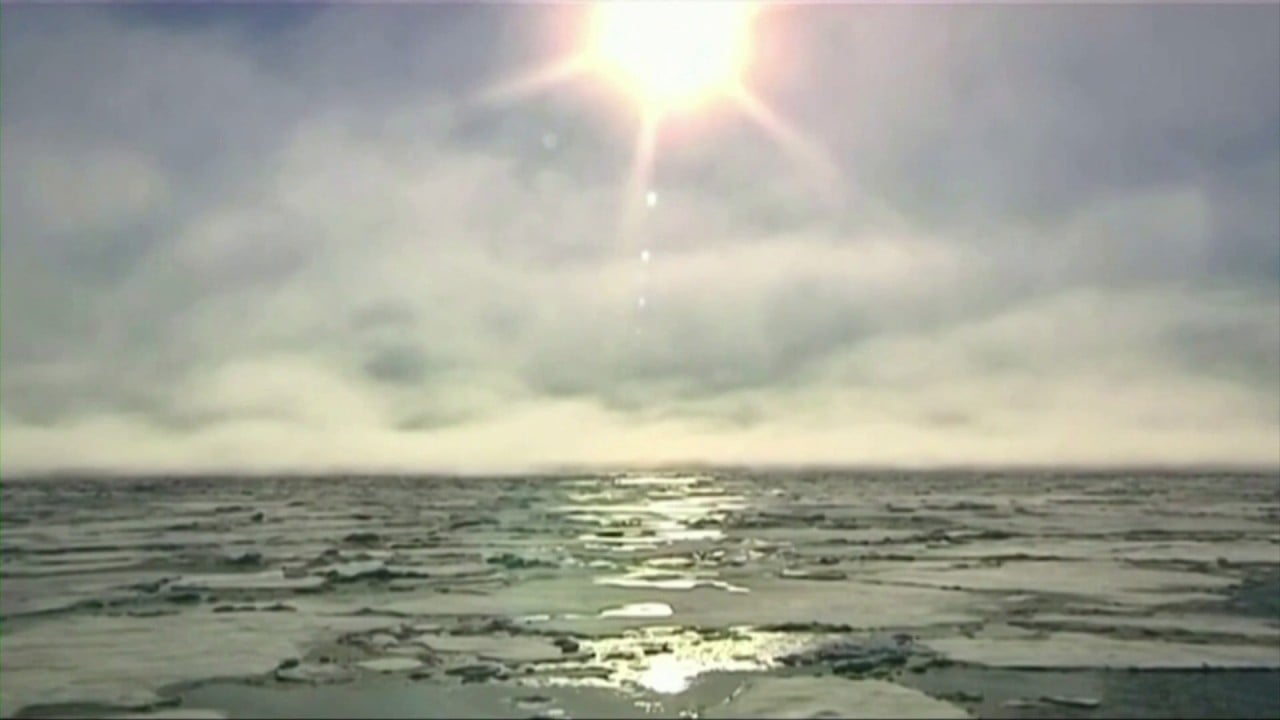
‘Zombie ice’ from Greenland will raise global sea level almost 30cm, study says
- Even without any future global warming, Greenland’s melting ice sheet will cause major sea level rise, new study says
- ‘We’re talking about large portions of places like New York, Miami and Bangladesh disappearing’: study co-author
Zombie ice from the massive Greenland ice sheet will eventually raise global sea level by at least 27cm (10 inches) on its own, according to a new study.
Zombie or doomed ice is ice that is still attached to thicker areas of ice, but is no longer getting fed by those larger glaciers. That is because the parent glaciers are getting less replenishing snow.
Meanwhile the doomed ice is melting from climate change, said study co-author William Colgan, a glaciologist at the Geological Survey of Denmark and Greenland.
“It’s dead ice. It’s just going to melt and disappear from the ice sheet,” Colgan said in an interview. “This ice has been consigned to the ocean, regardless of what climate [emissions] scenario we take now.”
Study lead author Jason Box, a glaciologist at the Greenland survey, said it is “more like one foot in the grave”.
The unavoidable 27cm in the study is more than twice as much sea level rise as scientists had previously expected from the melting of Greenland’s ice sheet.
Greenland expedition discovers ‘world’s northernmost island’
The study in the journal Nature Climate Change said it could reach as much as 78cm. By contrast, last year’s Intergovernmental Panel on Climate Change report projected a range of 6-13cm for likely sea level rise from Greenland ice melt by the year 2100.
“That’s a very bad case scenario,” said David Bahr, a study co-author and glaciologist at the Institute for Arctic and Alpine Research at the University of Colorado Boulder. “We’re talking about large portions of places like New York, Miami and Bangladesh disappearing.”
What scientists did for the study was look at the ice in balance. In perfect equilibrium, snowfall in the mountains in Greenland flows down and recharges and thickens the sides of glaciers, balancing out what’s melting on the edges.
But in the last few decades there’s less replenishment and more melting, creating imbalance. Study authors looked at the ratio of what’s being added to what’s being lost and calculated that 3.3 per cent of Greenland’s total ice volume will melt no matter what happens with the world cutting carbon pollution, Colgan said.
“I think starving would be a good phrase,” for what’s happening to the ice, Colgan said.
One of the study authors said that more than 120 trillion tonnes (110 trillion metric tonnes) of ice is already doomed to melt from the warming ice sheet’s inability to replenish its edges. When that ice melts into water, if it were concentrated only over the United States, it would be 11 metres deep.
This is the first time scientists calculated a minimum ice loss – and accompanying sea level rise – for Greenland, one of Earth’s two massive ice sheets that are slowly shrinking because of climate change from burning coal, oil and natural gas.
Scientists used an accepted technique for calculating minimum committed ice loss, the one used on mountain glaciers for the entire giant frozen island.
Gerhard Krinner, another IPCC author specialising in ice sheet climate modelling and who was not involved in the study, said the findings broadly tallied with total levels of sea level rise seen in more complicated models, but questioned the arguments that this would largely happen this century.
The Arctic will soon see more rain than snow: study
“The work really provides an estimate of the committed long-term (multi-century or even multi-millennial) response of the Greenland Ice Sheet, not an estimate of minimum loss over this century,” said Krinner, a senior scientist at the French research agency CNRS.
The world has warmed an average of nearly 1.2 degrees Celsius since pre-industrial times, unleashing a catalogue of impacts from heatwaves to more intense storms.
Under the Paris climate deal, countries have agreed to limit warming to 2 degrees.
In their report on climate impacts this year, the IPCC said even if warming is stabilised at 2 degrees to 2.5 degrees, “coastlines will continue to reshape over millennia, affecting at least 25 megacities and drowning low-lying areas”, which were home to up to 1.3 billion people in 2010.
Additional reporting by Agence France-Presse and Tribune News Service


